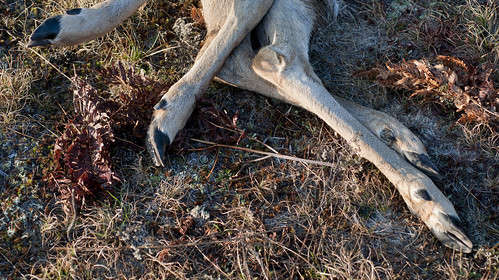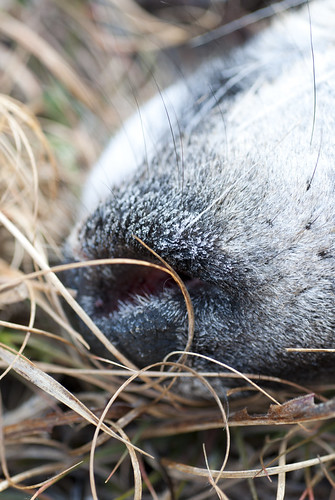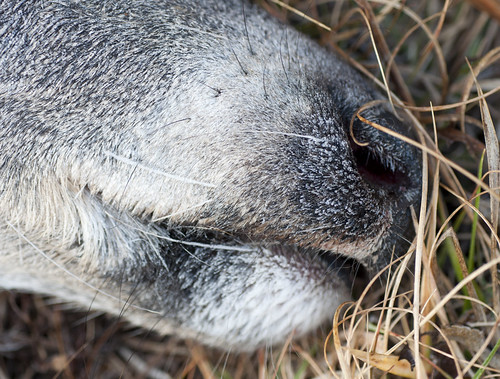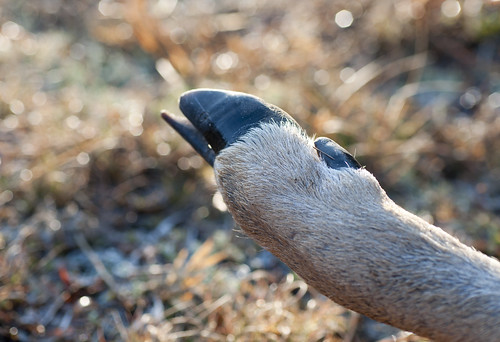It's November – and in the northwoods, that means less sunlight, colder temperatures, and an influx of winter birds visiting the bird feeders. If you too have a bird feeder, you might notice the vast amounts of chickadees, nuthatches, and woodpeckers that visit immediately before a particularly chilly or snowy day. These incredible birds don't migrate south for the winter: they remain year-round, even through the coldest and darkest months. To keep their tiny bodies warm, they must eat constantly, and though there are plenty of natural food sources, you can help!
Suet cakes, usually made from bird seed and rendered beef fat, are a product designed for feeding woodpeckers and other winter birds. At first glance, beef fat might seem like a strange component to bird food – and in a way, it is. Many birds, however – including chickadees and woodpeckers – do scavenge the meat and fat from animal carcasses, especially in the colder months. Deer remains are an especially important source of wintertime protein; in cities and subdivisions, though, where there are few or no deer, cow fat – a waste product of the beef farming industry – becomes the alternative.
But before you go out and buy suet cakes for your winter birds, let's skip the rendered beef fat and talk about a little DIY project!
You'll need a medium- to large-sized, freshly-dead mammal, a few suet cake molds, a small amount of birdseed, and some peanut butter, if you really want to get fancy.
In the spirit of this blog, I used the fat from a medium-sized raccoon, found dead on the road. (During this time of year, many mammals – raccoons included – are bulked up for the winter, and the amount of fat they accumulate is really quite impressive.) After skinning the raccoon, I set aside about a half-pound of fat – enough to make two suet cakes.
Step One: Melt the Fat!
Stick the animal fat in a saucepan – ideally, one you won't be cooking your own meals in!
When the fat is first harvested, it's slimy, pink, and opaque. As it's heated, however, it turns a creamy color, becoming translucent before melting to a clear liquid.
It takes very high temperatures for fat to melt, so proceed with caution! It also takes time – be patient, and allow for the fat to melt almost completely before removing it from the heat. When there are only a few small globs of unmelted fat remaining, turn off the heat, and let the saucepan cool for at least 15 minutes before proceeding to the next step.
Step Two: Extra Goodies!
Though a solid block of animal fat is perfectly edible to birds, it doesn't hurt to add in some other tasty treats, as well. Before you mix anything into the melted fat, however, make sure it's not too hot. Drop a small amount of water into the saucepan: if it sizzles, the fat is still too hot! If not, you're ready for this next step.
Mix in a few tablespoons of peanut butter, if you'd like, then add in the goodies: sunflower seeds, peanuts, and even dried cranberries are a great addition to the diet of your backyard winter birds.
Step Three: Cool It!
Once all your ingredients are incorporated, it's time to pour the mixture into suet cake molds. I used the leftover packaging from store-bought suet cakes, but other homemade or impromptu molds will work, too – so long as they fit into a
standard suet feeder.
Allow the suet cakes to cool in your freezer for several hours. They'll be ready to put outside the next morning!
Step Four: Feed the Birds!
Once it's completely solidified, place your homemade suet cake into a suet feeder and hang it up with the rest of your bird feeders. Don't be dismayed if the birds don't immediately flock in to eat!
Though I hung up the suet cake on Sunday, it wasn't until today that we observed birds feeding from it. This morning, Steph saw a female hairy woodpecker (
Picoides villosus) eating the suet and took some photographs for me.
Whether you're a hunter with some leftover fat from your kill, or you have a habit of picking up roadkill from the curb, making homemade suet cakes is a rewarding experience, and one that your backyard winter birds are sure to enjoy!













